Welcome to the world of coffee roasting, where every degree of heat and every minute of the roast can transform a humble green bean into a masterpiece of flavor. In our journey as a professional roastery, we’ve encountered an array of coffee enthusiasts eager to explore home roasting to replicate the complex profiles offered by professionals like us. But what really sets home roasting apart from professional coffee roasting? Let’s delve into the world of coffee alchemy and discover the nuances that differentiate the two practices!
The Art and Science of Coffee Roasting
Coffee roasting, at its core, is both an art and a science. It requires a fusion of technical precision and sensory expertise to elicit the desirable flavors, aromas, and body from the coffee bean. For professional roasteries, this process involves heavy-duty machines capable of handling large batches, consistent heat application, and meticulous control over every stage of the roast. These machines often come with advanced software that monitors and adjusts temperature, airflow, and timing, ensuring each batch is uniform and reproducible.
On the other hand, home roasting offers an intimate, hands-on approach. Home roasters rely on smaller, more accessible equipment, ranging from simple stovetop pans to sophisticated home roasting appliances. These machines typically cater to personal consumption, allowing for experimentation with smaller bean quantities and varying roast profiles. While the level of control a home roaster can achieve is less precise than professional equipment, the charm of home roasting lies in its experimental nature and the personal touch one can bring to each batch.
Control and Consistency
Professional roasteries stand out in their ability to produce consistent results time after time. This consistency is key for businesses whose customers expect the same flavor profile with each purchase. Professionals often employ roast profiling and cupping sessions to ensure their products meet strict quality standards. Iron and Fire, we adhere to rigorous quality conrol standards. It is also not uncommon for professional outfits to seek certifications, like the Specialty Coffee Association (SCA) standards, to back their quality claims. The capacity to fine-tune the roasting parameters and replicate them across numerous batches is a highlight of professional roasting.
Home roasters, while embracing the freedom of customizability, may find that achieving the same level of consistency can be challenging. With variables such as room temperature, bean origin, and manual intervention at play, each home-roasted batch may present a unique profile. Although this can be seen as a lack of consistency, it also adds to the appeal of home-roasting, creating a personal and handcrafted product.
Scale and Efficiency
Scale is a considerable differentiator—professional roasters are designed to process larger quantities of beans, often several kilograms at a time, catering to a broader audience. This efficiency in handling large batches is essential for a coffee roastery business that needs to meet customer demand while maintaining operational profitability.
Home roasting typically doesn’t need to deal with such demands and operates on a scale suitable for personal or small community consumption. This scale impacts not only the amount of coffee one can roast but also the cost-effectiveness of the roasting process. While home roasters may lack the efficiency of their professional counterparts, they offer an accessible entry point for coffee enthusiasts to explore the realms of roasting without a significant investment.
Knowledge and Experience
Professional roasters typically have years of experience and training, resulting in a deep understanding of the intricacies of coffee roasting. This expertise allows them to make informed decisions about bean selection, roast degree, and flavor development. They often rely on a collaborative team of green coffee buyers, roasters, and quality control experts to hone their craft.
In the home roasting arena, the roaster is often a passionate individual or hobbyist looking to learn and explore. While there may be a steeper learning curve, the journey of acquiring knowledge and refining one’s craft is a rewarding aspect of home roasting. Many resources, such as workshops, forums, and books, are available to support home roasters in developing their skills.
Equipment and Technology
Professional roasting equipment is a significant investment, often equipped with the latest technology for monitoring and controlling various roasting parameters. These roasters provide uniform heat distribution and have features like cyclonic chaff separation and quenching systems to cool the beans quickly after roasting, preserving their flavor.
Home roasting devices vary widely, from modest popcorn poppers to sophisticated machines mirroring professional roasters on a scaled-down level. While home roasting equipment might lack some of the refined control of professional machines, many offer advanced features that allow home roasters to experiment and learn about the roasting process.
The main distinctions between home roasting and professional roasting lie in scale, control, consistency, and the level of expertise required to produce an exquisite cup of coffee. As a professional roastery, we thrive on the precision and consistency that our advanced equipment and seasoned skillsets provide. However, the home roasting movement’s passion and ingenuity cannot be understated, as it forms the backbone of coffee culture, keeping the spirit of exploration and innovation alive.
Both practices have their charm, and ultimately, the journey through the world of coffee roasting, be it as a professional or home enthusiast, is about deepening one’s appreciation for this remarkable beverage. Whether savoring a professionally-roasted artisanal blend or enjoying the fruits of a personal roast, every cup of coffee tells a story—one of culture, craft, and the unending pursuit of flavor perfection.






